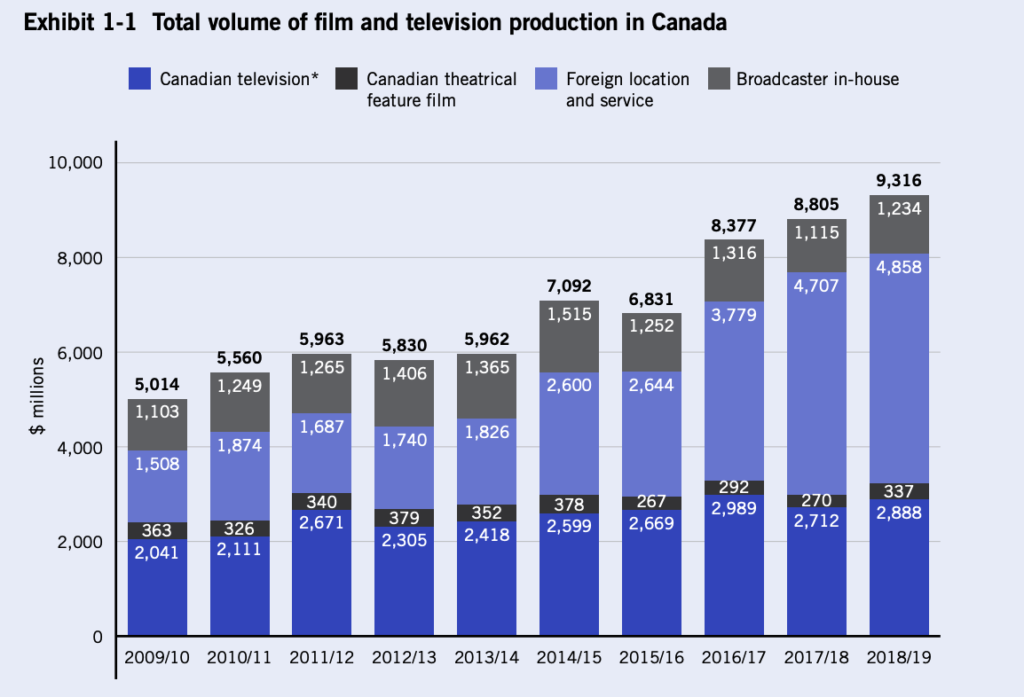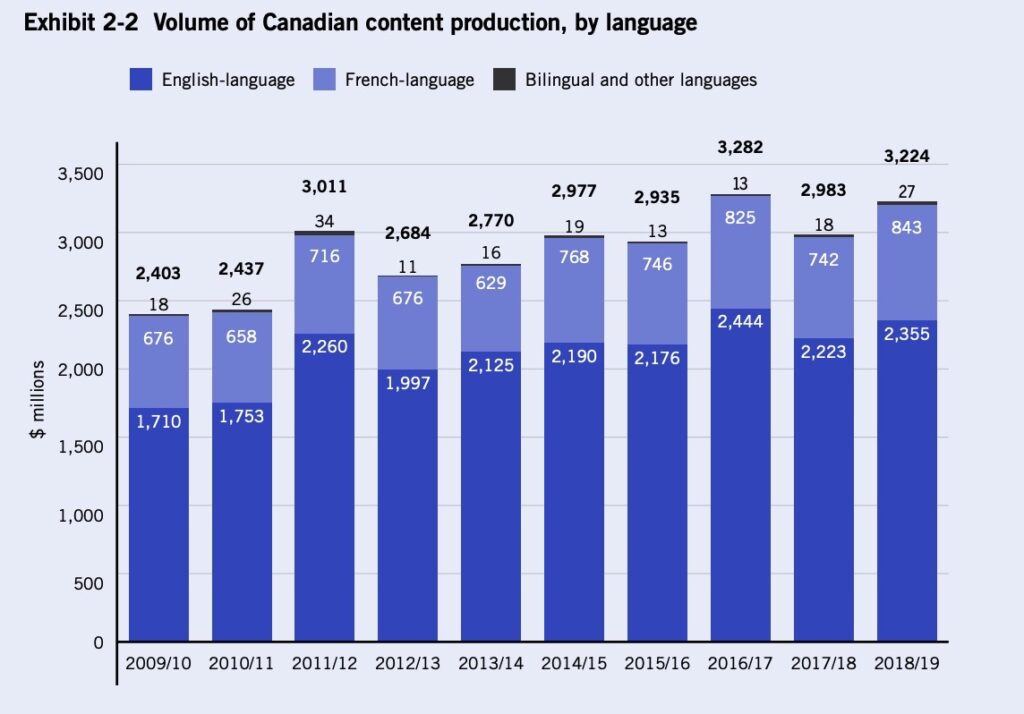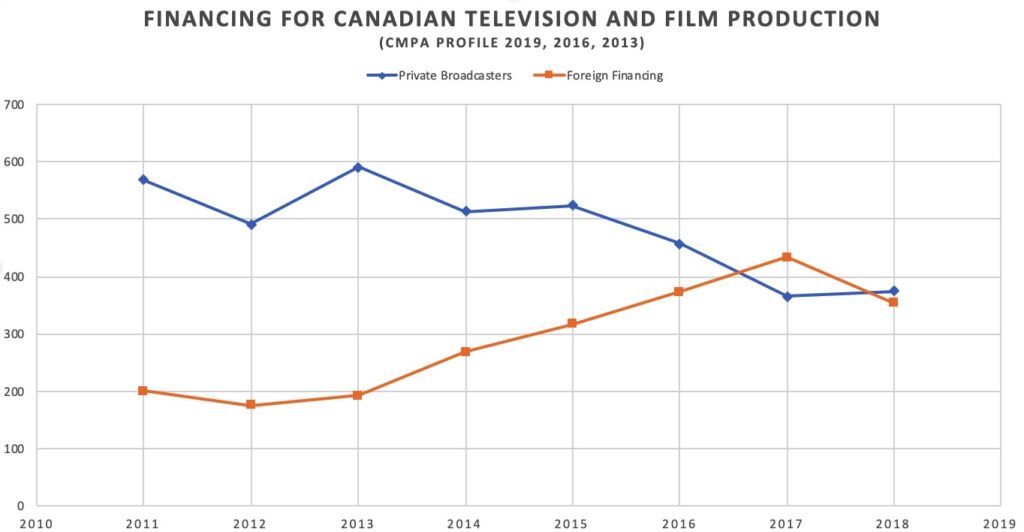Guilbeault’s Bogus Billion Dollar Claim: What the Data Actually Says About Canadian Film and TV Production
Canadian Heritage Minister Steven Guilbeault has said that his top legislative priority is to “get money from web giants.” While much of the attention has focused on his ill-advised plan to require Facebook to obtain licences for linking to news articles, his first legislative step is likely to target Internet streamers such as Netflix, Amazon and Disney with new requirements to fund Canadian content and to increase its “discoverability” by making it more prominent for subscribers. Based on his comments at several town halls, Guilbeault is likely to also create new incentives for supporting indigenous and persons of colour in the sector with a bonus for those investments (potentially treating $1 of investment as $1.50 for the purposes of meeting Cancon spending requirements). Much of the actual implementation will fall to the CRTC, which will be granted significant new regulatory powers and targeted with a policy direction.
Guilbeault’s case for establishing new mandated payments is premised on the claim that support for the film and television sector is declining due to the emergence of Internet streaming services, which have resulted in decreased revenues for the conventional broadcast sector and therefore lower contributions to Cancon creation. In fact, Guilbeault recently told Le Devoir that without taking action there would be a billion dollar deficit in support in the next three years. He says that his objective is to actually generate a few hundred million more per year in local production by the Internet streamers. In other words, he’s expecting roughly $2 billion in new investment over three years in Cancon from U.S. entities due to his planned regulations (moving from a billion dollar deficit to a billion dollars in extra spending).
While Guilbeault frames these regulatory requirements as a matter of fairness and “rebalancing”, industry data over the past decade tell a much different story. Indeed, there has been record setting film and television production in recent years, much of it supported by companies such as Netflix. CRTC chair Ian Scott last year said that Netflix is “probably the biggest single contributor to the [Canadian] production sector today.” While that is not entirely true – the data suggests that Canadian taxpayers are the biggest contributor with federal and provincial tax credits consistently the largest source of financing – the claim that there is a billion dollar deficit coming or that foreign streamers do not contribute to film and television production in Canada without a regulatory requirement is simply false.
I reviewed data from the Canadian Media Producers Association annual Profile document, which is supported by Canadian Heritage and provides a full breakdown of annual spending on production in Canada. This included the most recent Profile 2019 as well as Profile 2016 and Profile 2013 (the earlier versions are not online but I have copies on hand). Taken together, the reports feature data on how the sector has changed over the past decade with the emergence of Internet streaming and the decision in 2013 by Netflix to invest in original programming.
The overall financing picture shows an industry that has had record amounts of investment in film and television production with the total amount nearly doubling over the past decade.

CMPA Profile 2019, Exhibit 1-1, Pg. 7, https://cmpa.ca/wp-content/uploads/2020/04/CMPA_2019_E_FINAL.pdf
The largest growth has come from foreign location and service production, fueling thousands of new jobs. While that is discounted by some given that the production is not certified Canadian content, I’ve posted on how certified Canadian content often involves content with little relation to Canada. Yet certified Cancon has also grown in recent years, with the top two three years for certified Cancon television production occurring over the past three years. Further, last year was the biggest year for French language Cancon over the past decade. In other words, the data tells us that Cancon is also growing in Canada, despite the decline in broadcaster revenues and without additional regulations.

CMPA Profile 2019, Exhibit 2-2, Page 23, https://cmpa.ca/wp-content/uploads/2020/04/CMPA_2019_E_FINAL.pdf
Even more relevant is the overall Canadian television financing picture. Looking at the financing situation for both English and French, the data shows a gradual decline in broadcaster support and a steady increase in foreign financing. In fact, foreign financing exceeded private broadcast support in 2017 and were nearly the same in 2018.

CMPA Profile – Financing, Sources: CMPA Profile 2019, 2016, 2013
The real story of Canadian film and television production is not lost billions or unbalanced contributions as there has been significant growth in the sector and huge contributions from the unregulated foreign services. Rather, it is how Canadian film and television production has demonstrated it can compete without regulatory intervention. In other words, web giants are already paying without interventions from the CRTC or Minister Guilbeault that may increase consumer costs, reduce competition, violate net neutrality rules, and spark tariff retaliation from the U.S.
The post Guilbeault’s Bogus Billion Dollar Claim: What the Data Actually Says About Canadian Film and TV Production appeared first on Michael Geist.
Comments
Post a Comment